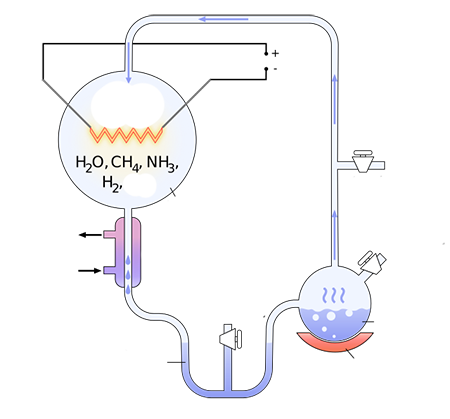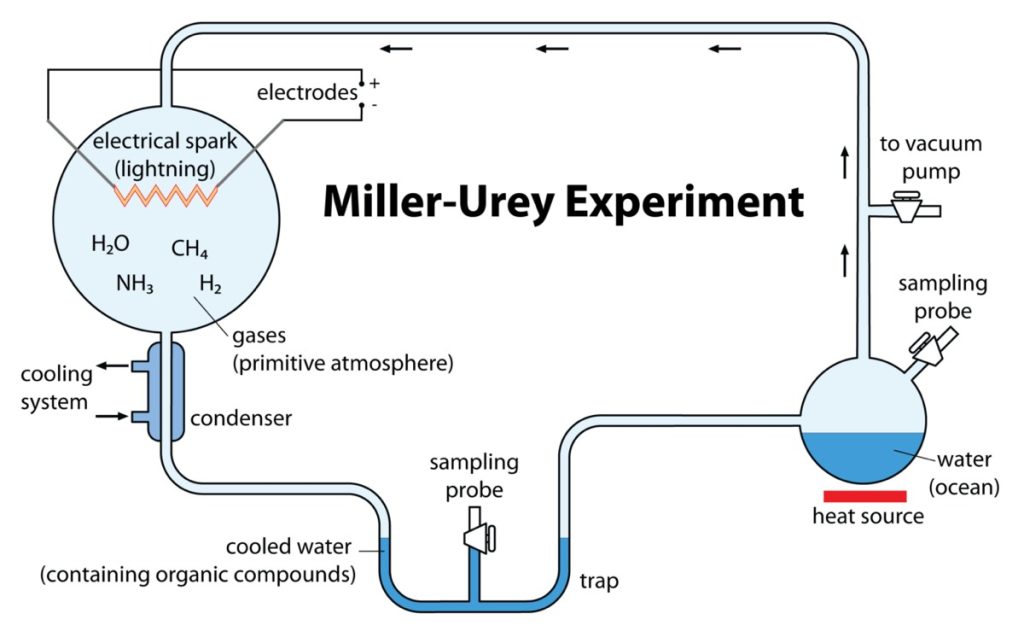
The Urey-Miller experiment was an experiment conducted by chemist Stanley Miller and physicist Harold Urey in 1953 that demonstrated the possibility of abiogenesis. Abiogenesis is the idea that life can come from non-living matter. The experiment was designed to simulate conditions on the early Earth and to see if the chemical components of life could be created from inorganic molecules.
Miller and Urey used a closed system to recreate the atmosphere of the early Earth, which is believed to have been composed mostly of methane, ammonia, hydrogen, and water vapour. The system included a glass flask containing the gases, a condenser to simulate Earth’s atmosphere, and electrodes to simulate lightning. They then ran an electric current through the flask, simulating lightning strikes.
After a week, Miller and Urey found that organic molecules had been created in the flask, including amino acids, which are the building blocks of proteins. This discovery was groundbreaking and suggested that life could have arisen from non-living matter.
Since the Urey-Miller experiment, scientists have continued to research the possibility of abiogenesis. They have used the same principles to create more complex organic molecules, such as sugars and lipids. In addition, scientists have been able to simulate conditions on the early Earth more accurately, leading to new discoveries about the origins of life.
The Urey-Miller experiment was a landmark in scientific history. It provided evidence for the possibility of abiogenesis and helped to shape the field of origin-of-life research. Today, scientists continue to build on the work of Miller and Urey in an effort to better understand how life began.

uri miller, yurrimiller, yuri miller
